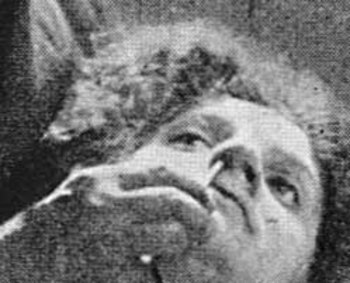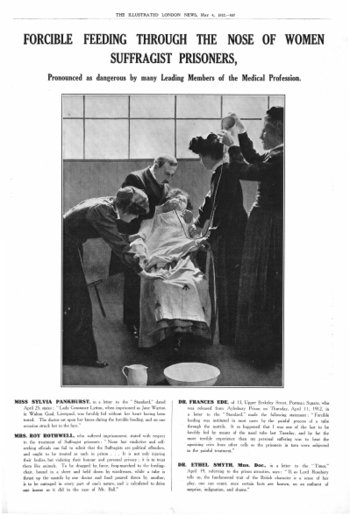JF Ptak Science Books Post 284
Lady Lytton was an upper-class Englishwoman who became interested in the ideas of equality and in suffrage for women at the very early part of the 20th century. Her interest in suffrage (which was lost, taken away, from women there in 1832 and to be regained in 1918) led her to join the Women's Social and Political Union (WSPU), and she became an avid, vocal, participating and socially visible member of the organization. She was arrested in 1909 following a demonstration at the House of Commons and was imprisoned, only to be released shortly thereafter after it was uncovered that she was the daughter of the former Viceroy of India--one cannot have the upper class in a common prison with the common people, so her imprisonment just wouldn't do. Enraged by this treatment, Lady Lytton became an advocate for changing the penal code relating to the treatment of working class prisoners. After disguising herself as a working class woman with the name of Jane Wharton, Lady Lytton was again arrested and imprisoned following a suffrage rally and protest in 1910. In the prison's effort to break her hunger strike, Jane Wharton endured the particularly heinous remedy of being fed through the nose. What happened is that a tube was forced into her nose and down into her stomach, with an assistant quickly forcing gruelly liquids through the tube via gravity into her stomach. She described the feeding as follows:
"[The doctor] put down my throat a tube which seemed to me much too wide and was something like four feet in length. The irritation of the tube was excessive. I choked the moment it touched my throat until it had got down. Then the food was poured in quickly; it made me sick a few seconds after it was down and the action of the sickness made my body and legs double up, but the wardresses instantly pressed back my head and the doctor leant on my knees.
"The horror of it was more than I can describe. I was sick over the doctor and wardresses, and it seemed a long time before they took the tube out. As the doctor left me he gave me a slap on the cheek, not violently, but as it were, to express his contemptuous disapproval."
Another suffragette, Mary Leigh, describes the forced feeding spectacle as follows, following her own episode in September 1912:
"The Wardresses forced me on to the bed and the two doctors came in with them, and while I was held down a nasal tube was inserted. It is two yards long with a funnel at the end - there is a glass junction in the middle to see if the liquid is passing. The end is put up the nostril, one one day, and the other nostril, the other. Great pain is experienced during the process ... the drums of the ear seem to be bursting, a horrible pain in the throat and the breast. The tube is pushed down 20 inches. I have to lie on the bed, pinned down by Wardresses, one doctor stands up on a chair holding the funnel at arms length, so as to have the funnel end above the level, and then the other doctor, who is behind, forces the other end up the nostrils."
"The one holding the funnel end pours the liquid down; about a pint of milk, sometimes egg and milk are used.... Before and after use, they test my heart and make a lot of examination. The after-effects are a feeling of faintness, a sense of great pain in the chest, in the nose and the ears...."
"I was very sick on the first occasion after the tube was withdrawn."
In any event, I had heard of such treatment, but I had never seen a contemporary image of the process; and I was very surprised to find this in the pages of the Illustrated London News for 1912. It was, after all, a pretty sniffy magazine not much given to social reporting of this sort; but this was a pretty strong condemnation of the practice, considering the source.





Comments